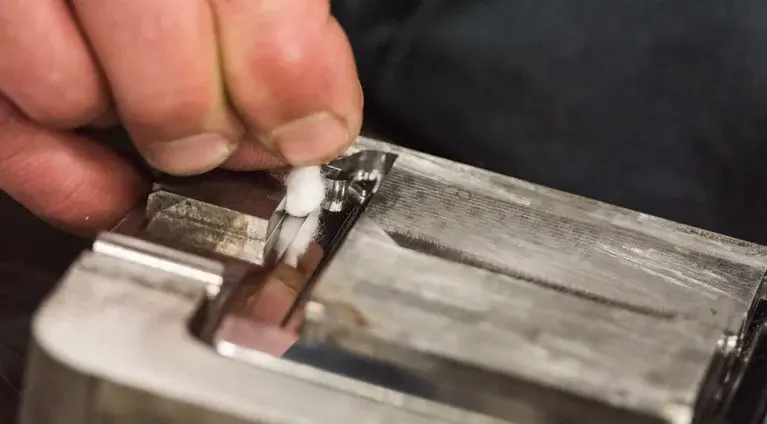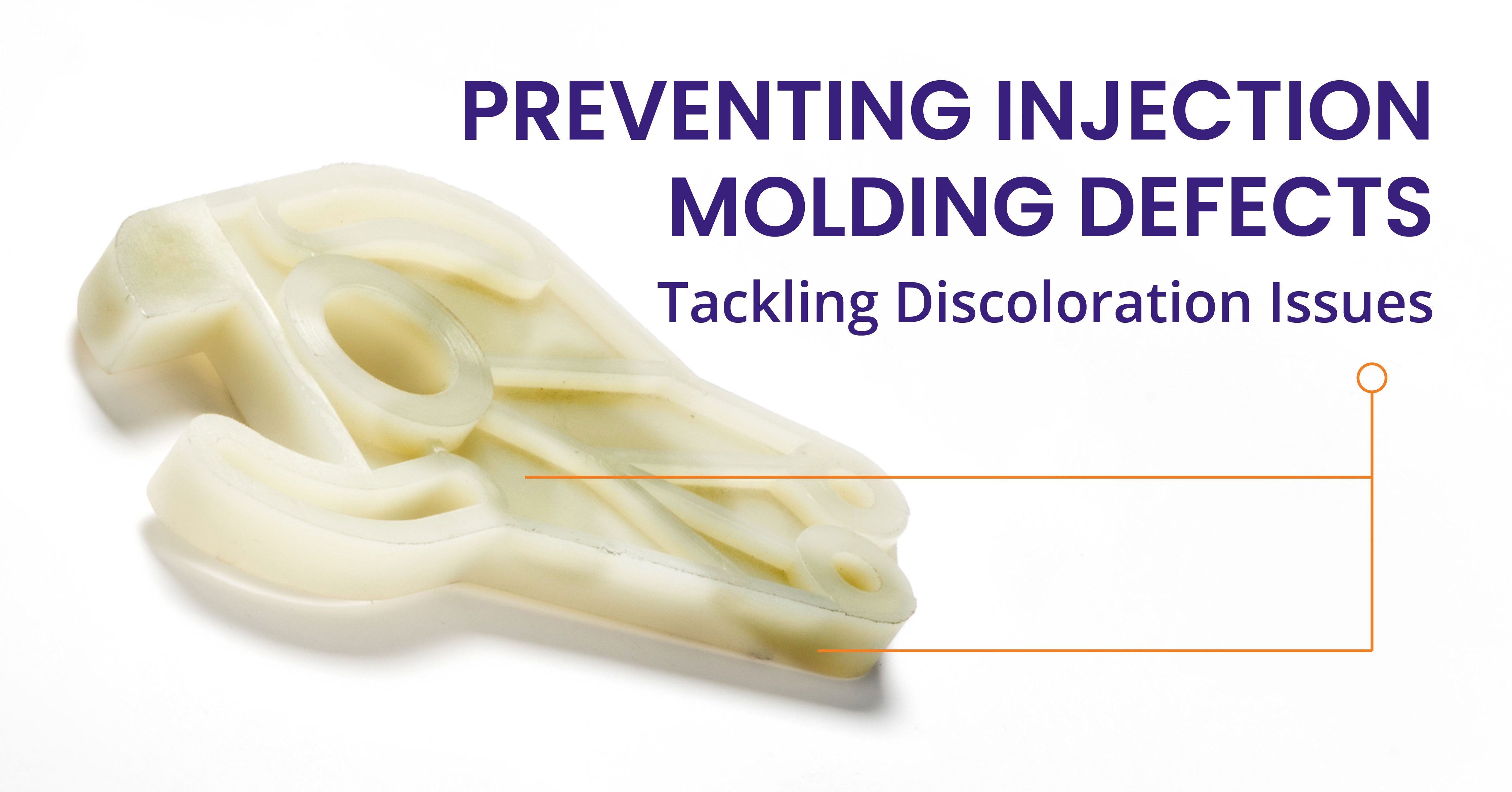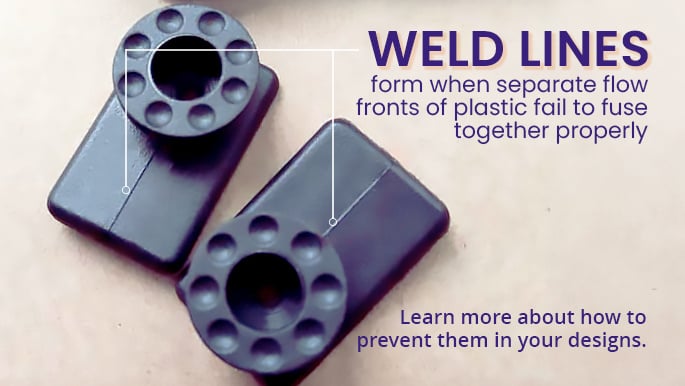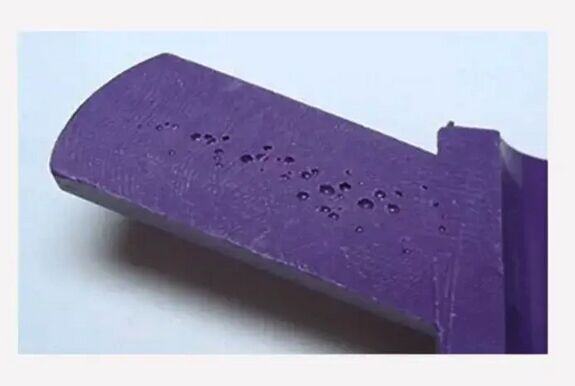Injection Molding Defects: Discoloration – Why It Happens and How to Avoid It
What Is Discoloration? Discoloration in injection molding refers to any noticeable inconsistencies in the color of molded parts, such as streaks or...
3 min read
Nick Erickson : Jun 24, 2024 3:33:30 PM

Learn how to optimize mold design for efficient injection molding and improve product quality while reducing costs.
Injection molding defects such as short shots, sink marks, and warpage can have a significant impact on the quality of the final product. Mold flow analysis plays a crucial role in preventing these defects by identifying potential issues early in the design phase.
Short shots occur when the plastic resin does not completely fill the mold cavity. Mold flow analysis can help identify potential areas of inadequate filling and suggest design modifications to ensure complete filling.
Sink marks are depressions or indentations on the surface of the molded part. They occur when there is uneven cooling of the plastic resin. Mold flow analysis helps optimize the cooling system by simulating the cooling process and suggesting changes to prevent sink marks.
Warpage is the deformation of the molded part caused by uneven cooling or inadequate mold design. Mold flow analysis can predict areas of potential warpage and provide recommendations to minimize or eliminate this issue.
By using mold flow analysis, designers can proactively address these common injection molding defects, resulting in higher-quality products and reduced scrap rates.
Mold flow analysis software is a valuable tool in the injection molding process. It allows designers to simulate how a plastic resin will flow into and fill an injection mold. By accurately predicting the resin flow, the software helps optimize the mold design, ensuring proper filling and reducing the risk of defects.
One of the key benefits of mold flow analysis software is its speed and cost-effectiveness. Instead of the traditional method of machining metal plates, building an injection mold, running sample parts, and then modifying the tool, modeling the injection molding process in software is much faster and less expensive.
Another advantage of mold flow analysis software is its efficiency. With the ability to simulate the injection molding process, designers can make informed decisions early in the design phase. This leads to better-quality injection molded products with lower costs and faster turnaround times.
Mold makers and injection molders can also benefit from reviewing mold flow data. By analyzing the simulation results, they can identify potential issues and make adjustments to optimize the mold design and injection molding process.
The choice of mold material is crucial in mold design optimization. Injection molds are typically made of steel or aluminum. Steel molds are more expensive but offer several advantages such as longer lifespan, tighter tolerances, and different hardness grades.
Mold flow analysis software takes into account the transfer of heat during the injection molding process. Different plastics melt at different temperatures, and excessive heat can cause polymer degradation. Therefore, it is essential to select a mold material with appropriate thermal performance to ensure optimal part quality.
The selection of mold material also affects the overall production cost. While steel molds may have a higher initial cost, their durability and ability to produce parts with tighter tolerances can result in long-term cost savings.
Considering the importance of mold material selection, mold flow analysis helps designers make informed decisions and choose the most suitable material for their specific injection molding application.
In addition to mold material selection, optimizing runners, gates, and cooling lines is essential for efficient injection molding.
Runners are channels that deliver molten plastic resin from the injection molding machine to the mold cavity. Mold flow analysis helps determine the optimal size and shape of runners to ensure proper flow and minimize pressure drop.
Gates are the entry points for the plastic resin into the mold cavity. Mold flow analysis can suggest the best gate locations and designs to achieve uniform filling and reduce the risk of defects.
Cooling lines are used to remove heat from the mold and solidify the plastic resin. Proper cooling is crucial for achieving the desired part quality and minimizing cycle time. Mold flow analysis can simulate the cooling process and provide recommendations for optimizing the cooling system, such as adjusting the position and size of cooling lines.
By optimizing runners, gates, and cooling lines, designers can improve the efficiency of the injection molding process, reduce cycle time, and enhance the overall quality of the molded parts.
By following these practical tips and leveraging mold flow analysis software, you can optimize your mold design for more efficient injection molding, resulting in cost savings and improved product quality. As always, contact Aprios for help with DFM and troubleshooting your Injection Molding questions.

What Is Discoloration? Discoloration in injection molding refers to any noticeable inconsistencies in the color of molded parts, such as streaks or...

What Are Weld Lines? Weld lines are visible lines or seams that appear on molded plastic parts where two or more streams of molten plastic meet but...

What Are Voids? Voids are empty pockets or spaces that form inside your molded parts. While they might not always be visible from the outside, they...